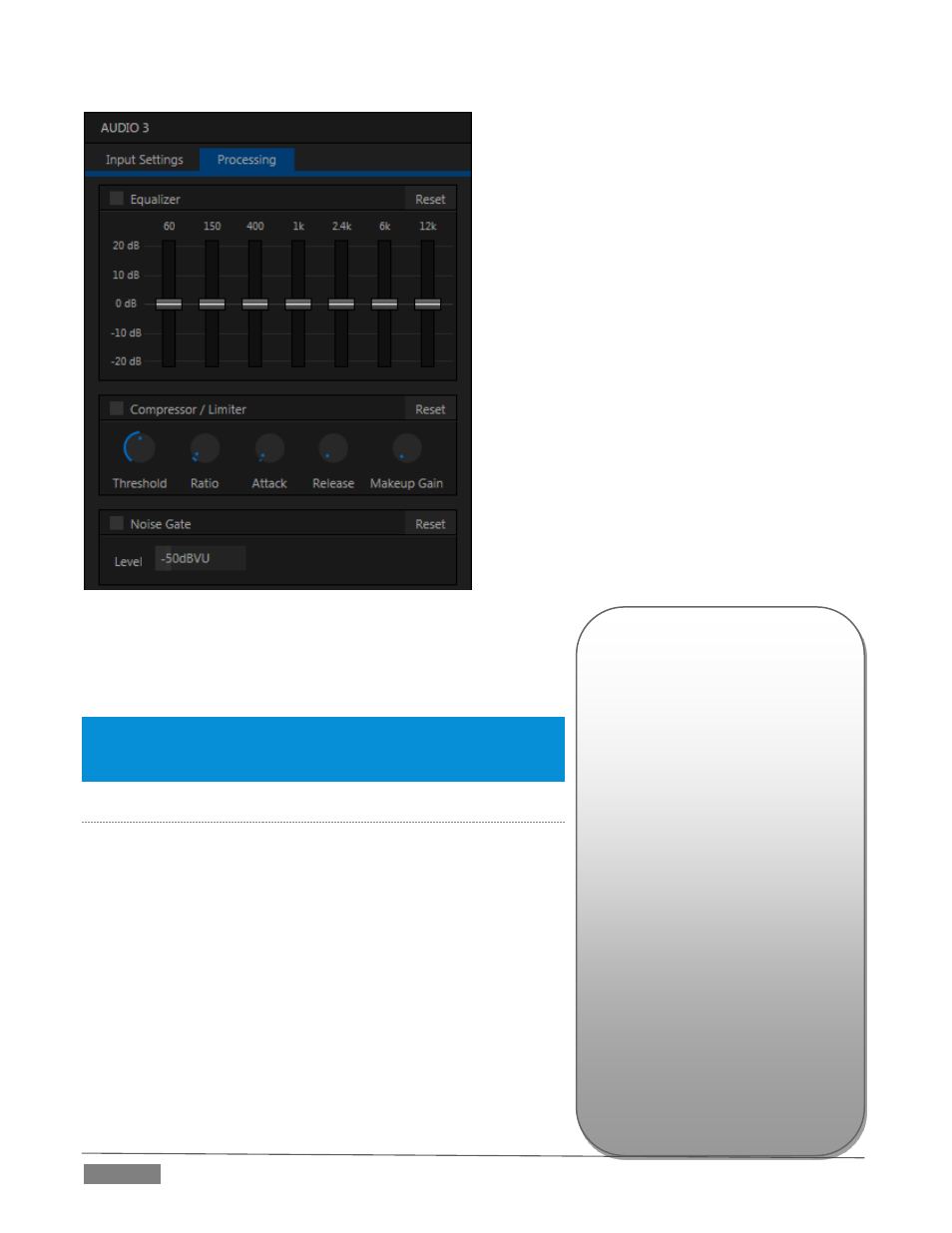NewTek TriCaster Advanced Edition User Guide User Manual
Page 176

Page | 164
FIGURE 205
The effect applied falls off gradually as sound draws closer to
neighboring frequencies on either side. Click Reset to return all
sliders to 0dB.
Hint: Naturally, reducing or increasing the level of one or more tonal
bands affects the overall output level as well. This may call for you to
trim the main level setting for the affected input or output.
C
OMPRESSOR
L
IMITER
The Compressor/Limiter is capable of preventing clipping (see
Section 15.8.1) from unexpected peaks or transients, and making
talent sound better than they do in real life, bringing voices, music
and other audio sources into an optimal dynamic range. Being able
to do this independently for each output too is icing on the cake,
especially for Internet streaming, as it ensures correct levels at any
time.
T
HRESHOLD
Sound above the set Threshold level will be compressed; the
amount of compression and the manner in which it is applied are
both dictated by the other settings.
Compressor … Limiter – what’s
the difference, anyway?
Compression and limiting are
not really different processes,
but rather a matter of degree
and
perceived
effect.
Compression, ideally, takes the
form of a subtle, almost
imperceptible modulation of the
sound level to bring it into a
more pleasing and convenient
range. A limiter is applied more
for the purpose of managing,
even
‘crushing’,
unwanted
spikes and transients.
That distinction aside, a limiter
is essentially just a compressor
set to a high ratio and, generally,
a fast attack time. Audio
engineers typically consider
‘compression’ with a ratio of
10:1 or more as ‘limiting’.
